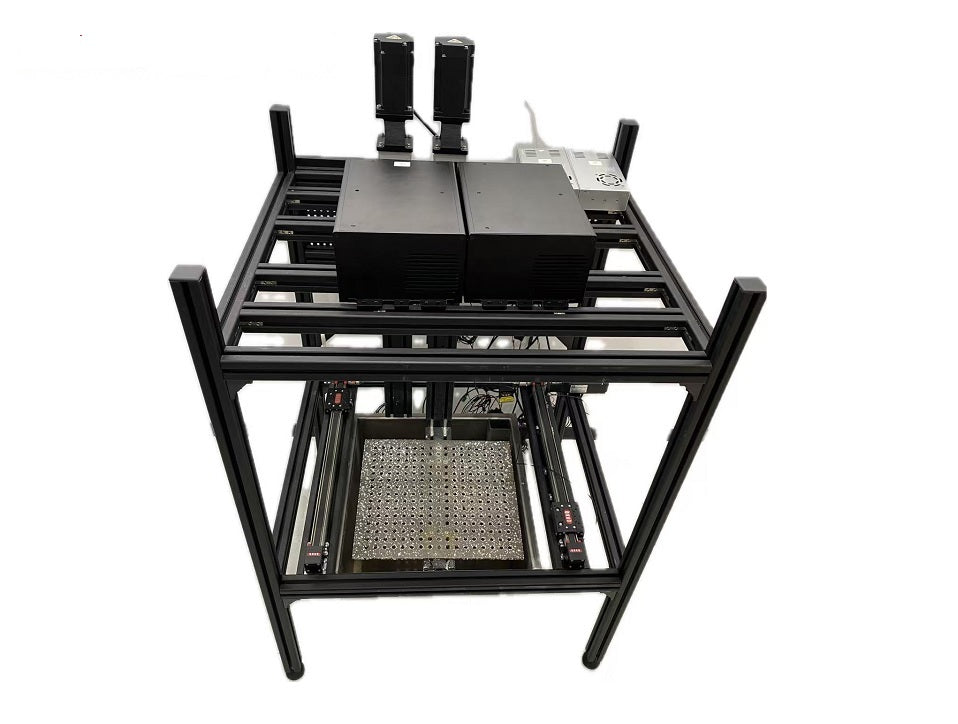Vat Photopolymerization 3D Printing Specific technical variants include:
- Stereolithography (SLA): Utilizes a UV laser to selectively cure liquid resin.
- Digital Light Processing (DLP): Employs a projector light source to cure resin layer by layer.
- LCD Masking (e.g., LCD-SLA): Uses an LCD screen as a dynamic photomask to cure resin.
Technical Principle: UV light is used to cure photopolymer resin layer by layer, achieving high-precision object fabrication (typically 25-100 microns).
Core Advantages: High resolution, excellent surface finish, and suitability for intricate applications such as jewelry, dental devices, and microfluidic components.
1.Core Technological Breakthroughs
High-Speed Continuous Printing
The integration of CLIP (Continuous Liquid Interface Production) with advanced UV-LED light engines achieves printing speeds up to 100× faster than traditional layer-by-layer methods, enabling industrial-scale production of high-resolution parts.
TwoCure technology developed by Fraunhofer ILT eliminates the need for support structures by combining photopolymerization with controlled cooling, reducing post-processing time by 40%.
Sustainable Material Recycling
A novel renewable photopolymer resin platform enables full depolymerization of printed parts, allowing resin to be reused for subsequent printing cycles while maintaining mechanical properties.
Recyclable resins now achieve >95% recovery rates, addressing environmental concerns in high-volume manufacturing.
2. Material Innovations
Functional and Multi-Material Systems
Halide perovskite-doped resins achieve near-unity quantum efficiency (99.9%) for blue-green luminescence, revolutionizing optoelectronic device prototyping.
Bioactive photopolymers with tunable stiffness (0.5–20 GPa) enable 3D-printed tissue scaffolds and organ-on-chip systems for precision medicine.
High-Performance Industrial Resins
Flame-retardant resins (e.g., Accura® AMX Tough FR V0) now withstand temperatures up to 280°C, meeting aerospace combustion chamber requirements.
Carbon fiber-reinforced resins enhance tensile strength by 300% for load-bearing automotive components.
3. Emerging Applications
Medical and Biotechnology
Sub-10μm microfluidic channels printed via iCLIP (injection-assisted CLIP) enable lab-on-a-chip devices for real-time pathogen detection.
Patient-specific prosthetics with 50μm anatomical accuracy reduce surgical revision rates by 60%.
Advanced Manufacturing
Meter-scale wind turbine molds are now printed in <72 hours using hybrid SLA-composite workflows, cutting mold production costs by 45%.
AI-optimized lattice structures reduce material usage by 70% while maintaining aerospace-grade mechanical performance.
4. Persistent Challenges
Material-Process Trade-offs: Balancing print speed with resin toughness (e.g., elongation-at-break <200% in high-speed formulations).
Thermal Management: Layer adhesion defects persist in large-format prints (>1m³) due to uneven exothermic curing.
Standardization Gaps: Certification protocols lag behind for safety-critical applications like implantable medical devices.
These advancements position vat photopolymerization as a cornerstone of next-gen manufacturing, bridging rapid prototyping and end-use production across industries.


Share:
UV Projector: Powering Innovation Across Industries with SICUBE’s DLP Solutions
Summary of TIR Prism Applications
1 تعليق
a5jrxm